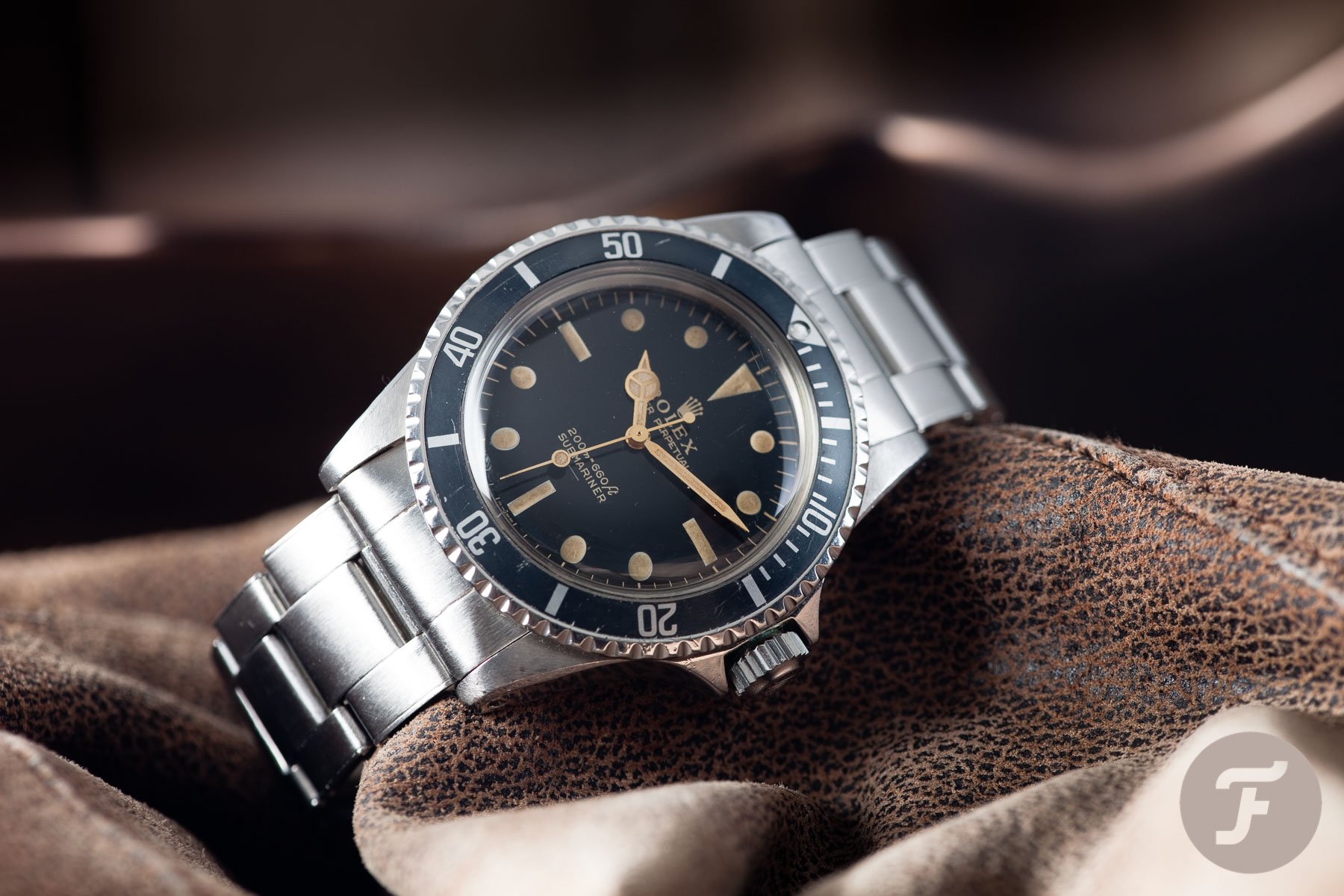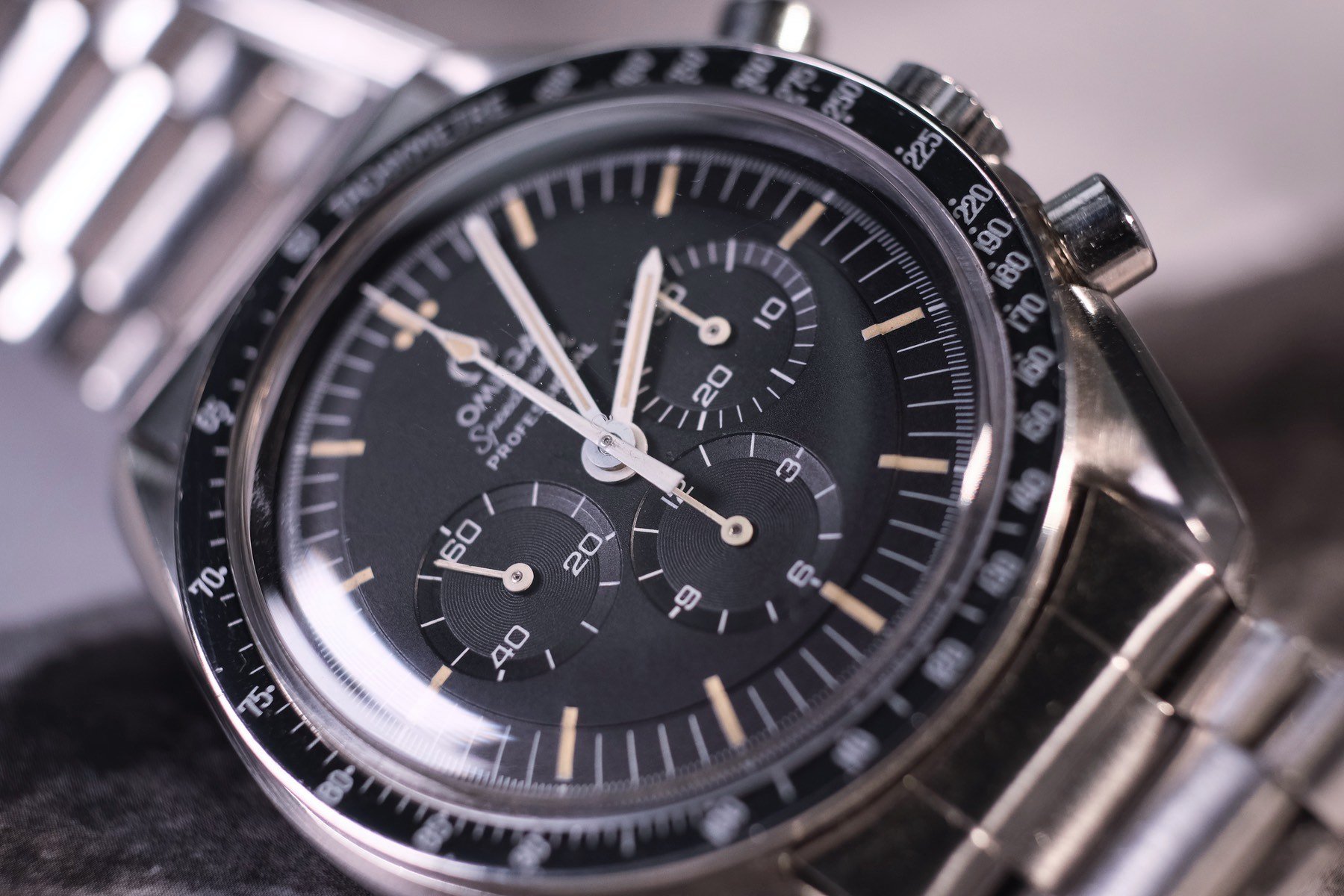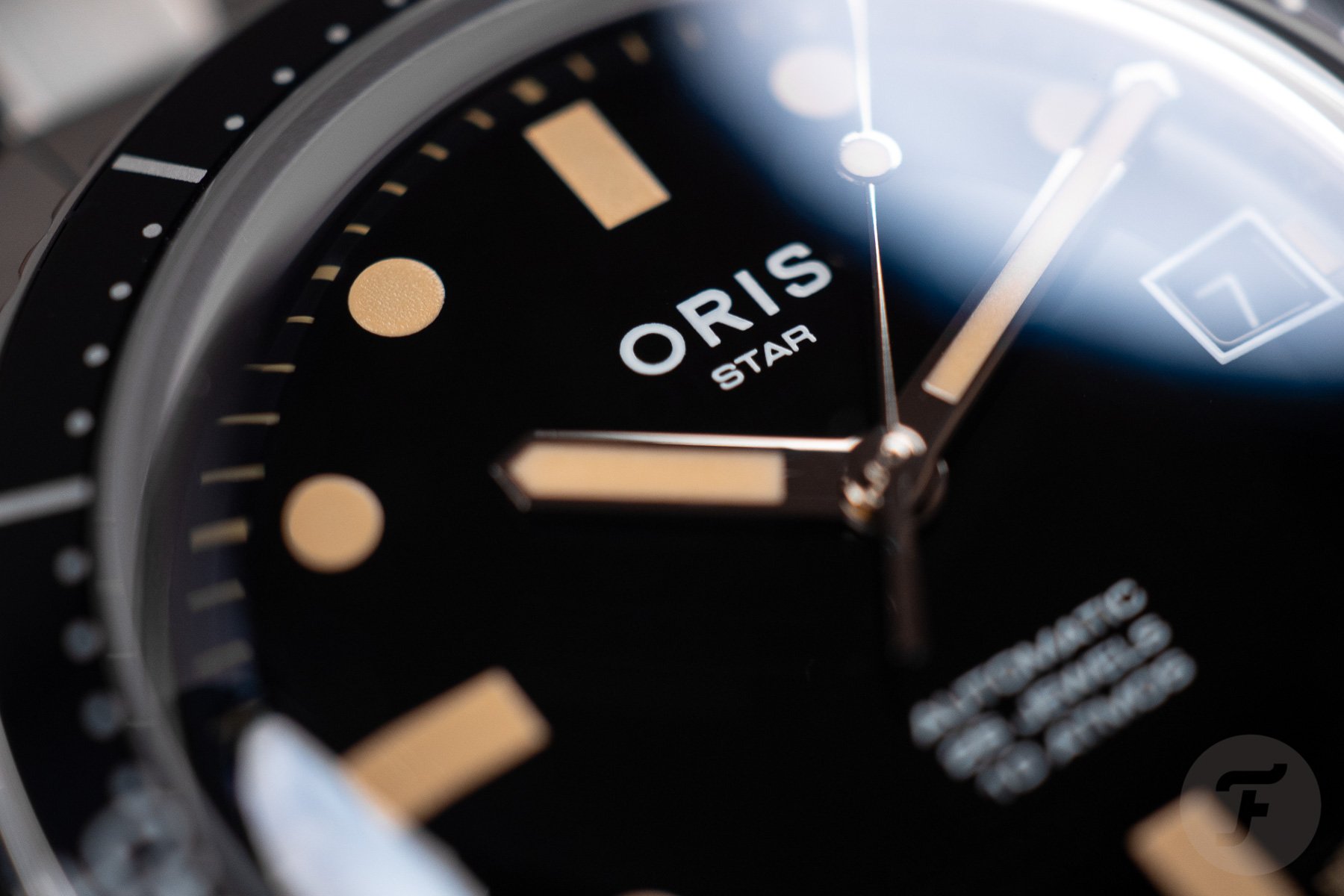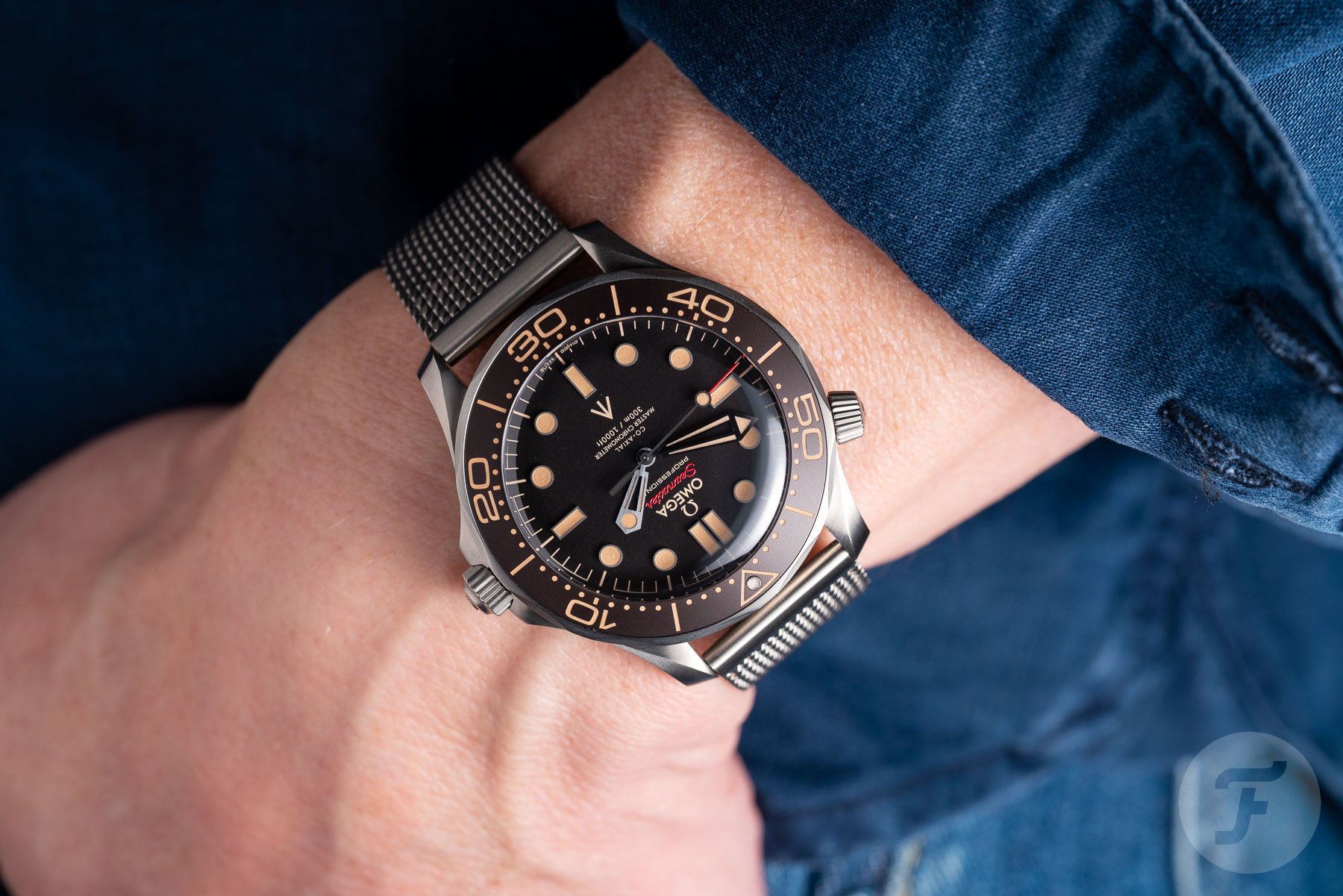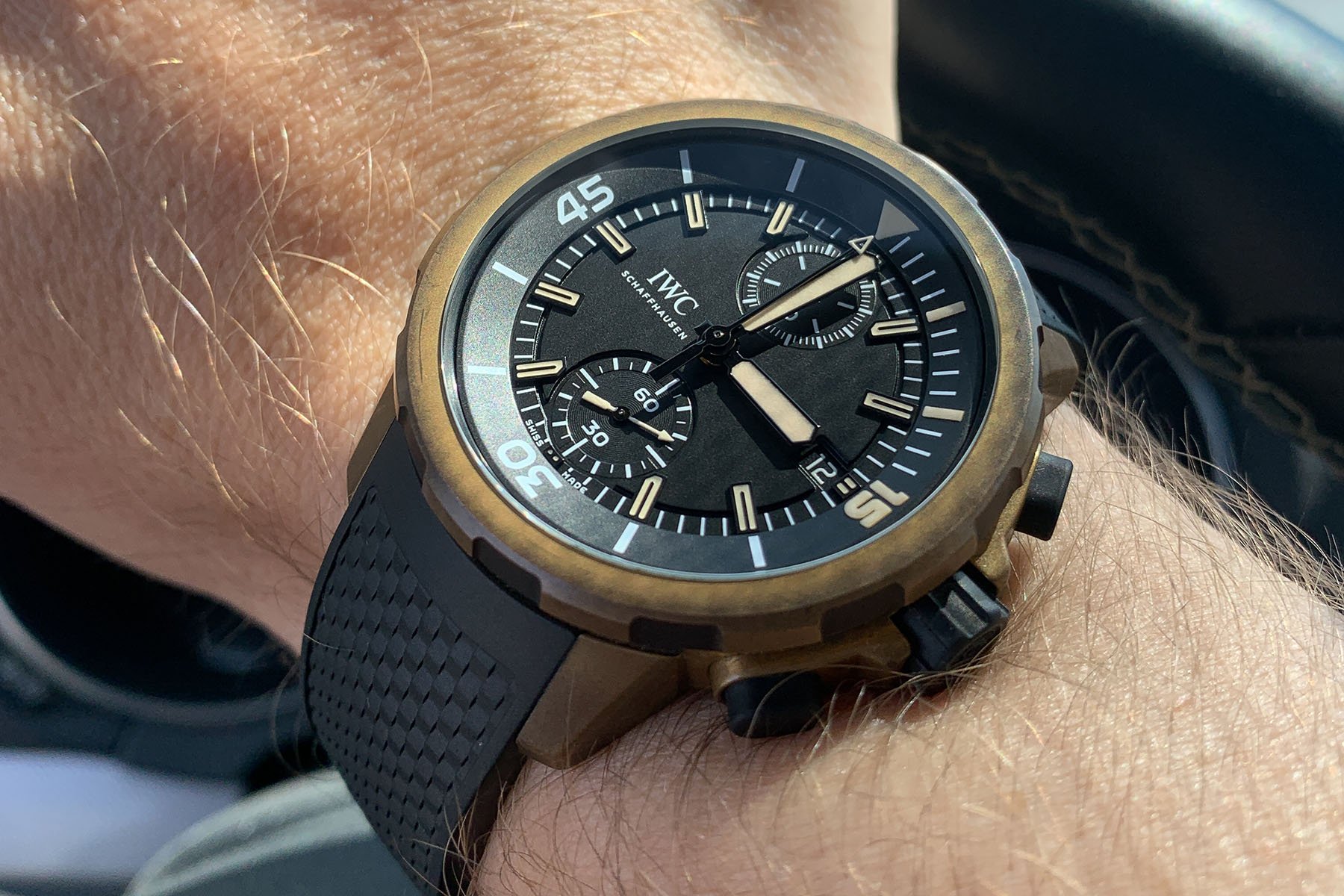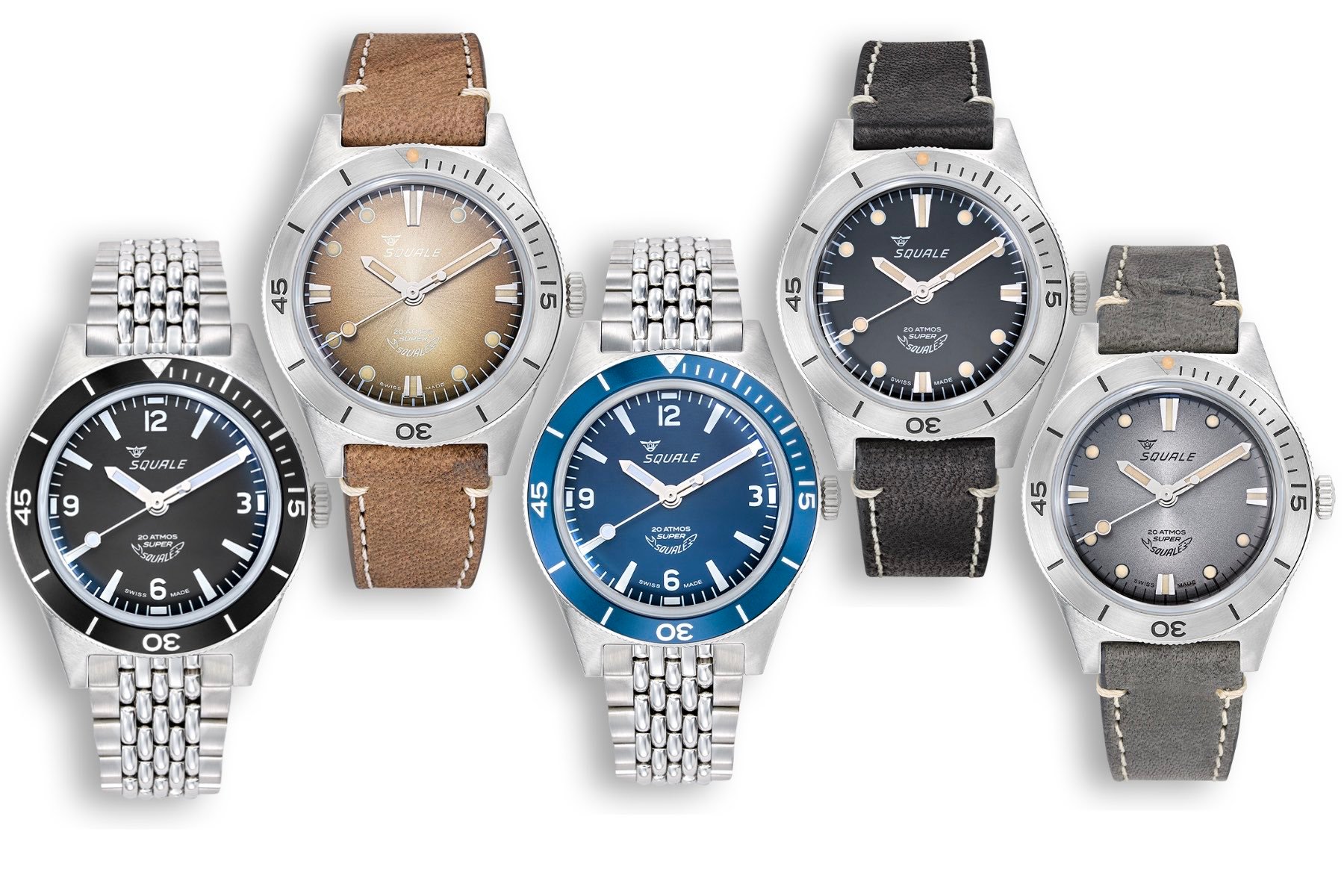Faux Patina: A Cheesy No-Go Or Just A Nicer Shade Of White?
Recently, I bought a Squale Super-Squale with old radium lume and a brown dégradé dial. It looks like it has been completely fried by the gamma radiation from that radium. Except… it’s Super-LumiNova, and it’s brand new. As a vintage head, I would have poo-pooed that not too long ago. Now I am happily wearing it. I think it is time for some introspection and re-evaluation of faux patina, or fauxtina for short.
Could it be that I am just getting less watch-snobby as I age? Or is there merit to faux patina after all? Let’s try to find out.
Patina: for the love of aging
One thing that many of us love about vintage watches is the plethora of aging effects you can get. There is some mystery surrounding such effects. Nobody knows for sure why some lume goes yellow, while another specimen of the same watch goes more orange. Some dials get completely toasted by radium, and others remain perfectly intact.
It is a complicated interplay of the elements that the watch gets exposed to and its individual components. As you may know, parts are often sourced from different suppliers and delivered in batches. A watch brand might not even know that its dial supplier switched varnish compounds from one batch to the next. Fifty years down the road, batch A might still be immaculate, bright silver, while batch B has turned champagne. And maybe that example that has been in a box for 50 years looks completely different from the one that was worn in bright sunlight for decades. Another might have had some moisture intrusion at some point, which was quickly fixed by a watchmaker. Still, that brief exposure could trigger entirely different aging effects yet again.
Some of these effects are, quite simply, beautiful. They add character and tell a story of a life well lived. Sometimes some discoloration or change of texture can add warmth that was missing from the original design. Vintage aficionados are happy to spend big on the most beautifully aged examples on the market. It really is a rather large part of the fun of vintage.
Faux patina: for the love of control
Ask any engineer about such aging effects, and he/she will tell you that they are not a feature but a failure. Some watch brands will even eagerly pull out your beautifully aged dial and swap it for a perfect new specimen. Technically, that makes sense. Materials with an unstable color or texture are inferior to stable alternatives.
Therefore, modern watchmaking has been about eliminating aging effects. Fading and scratching aluminum bezels became ceramic. Distorting and scratch-sensitive domed acrylic crystals became flat sapphire. Decaying and discoloring radium and tritium became stable Super-LumiNova and similar compounds. Varnishes and lacquers became more and more color-stable.
So if we want any sort of aged look, we had better put it in straight away. Time won’t do it for you anymore. Rather than seeing our watches age unpredictably, we now have watches that are built to look the same forever. And, technically speaking, that is an improvement.
That “faux” in faux patina means fake, right?
Many watch brands apply cream, yellow, orange, or brown hues of Super-LumiNova in a bid to recreate some of that vintage charm. Some, like my Super-Squale, go a step further and emulate a full radium-toasted dial. Aficionados have coined the terms faux patina and fauxtina to refer to such watches. The message implied by those terms is quite clear: it is fake aging. And since we nourish a strong authenticity and heritage cultus in the watch world, that is a bad thing.
I often hear a comparison with ripped jeans. Some consider store-bought torn jeans to be emulating years of hard wear for which the owner has not put in the work. It is inauthentic and, therefore, wrong. That comparison is flawed, though. New, fully intact jeans will eventually develop worn spots and tears. So if you like the look, you could be patient and wait for it. On the other hand, new watches will not develop discolored lume anymore. As a side note, many haters of ripped jeans will happily wear a pair of light blue jeans. Few realize that the required bleaching and stone washing are simulated aging as well. So before you go off on a tantrum about some holes, check that you are wearing only raw denim yourself. Pot and kettle, you know…
I used to be in the “faux patina is bad” camp — if you like an aged look, buy a vintage watch; if you want a new watch, buy one that looks new. Man, it feels good to be a morally unadulterated purist. But as with the nuance of ripped/faded/raw denim, life just isn’t that simple. Furthermore, being judgmental is rarely a healthy approach.
Another way to look at it
If you are up for having your biases tested, there is another, quite defendable way to look at it. Consider this: aging effects were not intended but emerged nonetheless, and some of us developed a taste for them. We found that a little yellowing on an otherwise monochromatic watch is actually beautiful. In fact, if we look at two 1960s Speedmasters, many of us prefer the one with the beige lume over the whiter one.
Today, we can produce lume in almost any color we like. Why not use those colors that we discovered we love so much, not for their vintage vibes but just for their own merit? I adore the creamy beige hour plots on an old Rolex Submariner 5513. Why should I pick a color that I like way less on the modern watch that I am about to buy? “Nope, you cannot have your beloved cream; it is considered fake. You must accept this cold, minty green.” This makes very little sense, right?
Maybe time uncovered a couple of color combinations that we had not considered or were incapable of making on our own. Lucky for us, these combinations are just a little more attractive on certain watches. Could we not just appreciate that little gift and run with it?
From “faux patina” to “colored lume”
Rather than seeing beige, yellow, brown, or orange lume as faux patina, we could decide to just see it as colored lume. That’s all it is, after all. It is merely a tool in the watch designer’s toolbox. It can be applied to great effect under the right circumstances. Sure, it can be misused too, and it often is. But it should not be considered fundamentally right or wrong if you ask me.
Still, it is one of an endless list of subjects that have become so divisive in our little sub-universe. It is almost political. I pitched this article this morning during our editorial meeting. “Guys, I want to do a piece on the question ‘is faux patina a bad thing?’”
“Yes, it is. Short article,” was the reply of a not-to-be-named colleague. He was exaggerating, naturally, but it does show a certain prejudice surrounding the topic.
So let me put it this way: the watch hobby is just so much more fun if you can look beyond dogma. Yes, there are some terrible faux patina watches out there. But there are some absolute stunners with lovely colored lume to be found as well. I, for one, enjoy the hell out of my little Super-Squale. You might say that it’s pretending to be something it’s not. I counter with this: some old radium watches have shown us a pretty neat color combo. I’ve got that on my brand-new watch now.
So what do you think of colored lume? Is there any in your watch box or on your wrist? Let me know in the comments.
You can also find and follow me on Instagram: @time_travelers_journal

